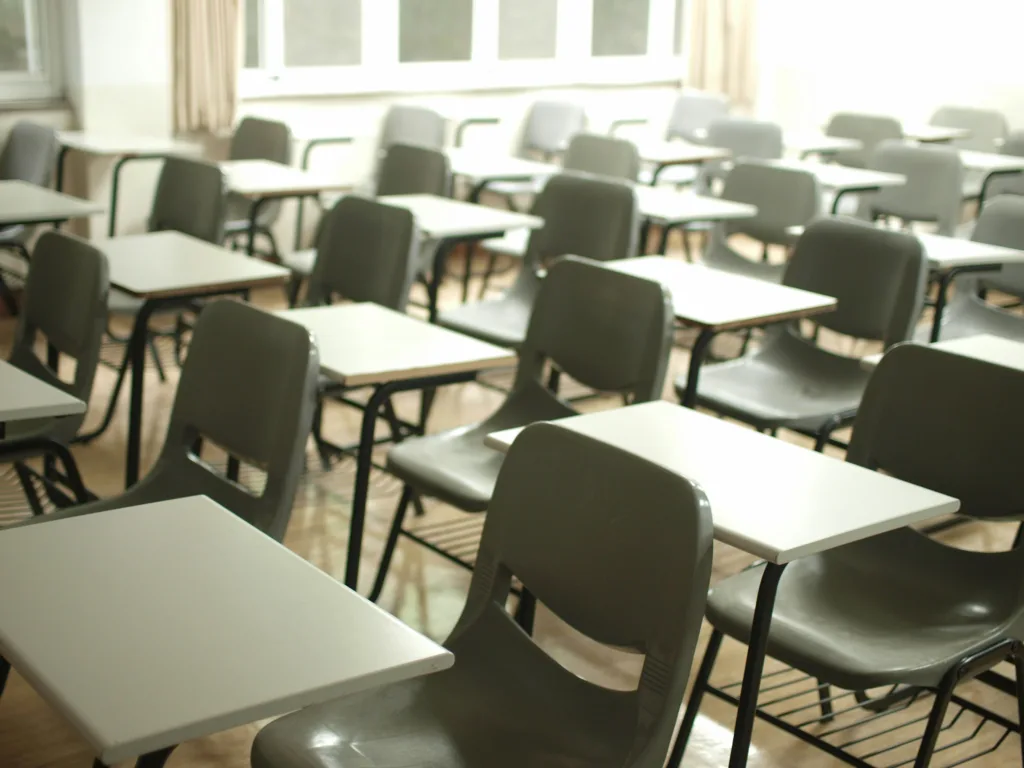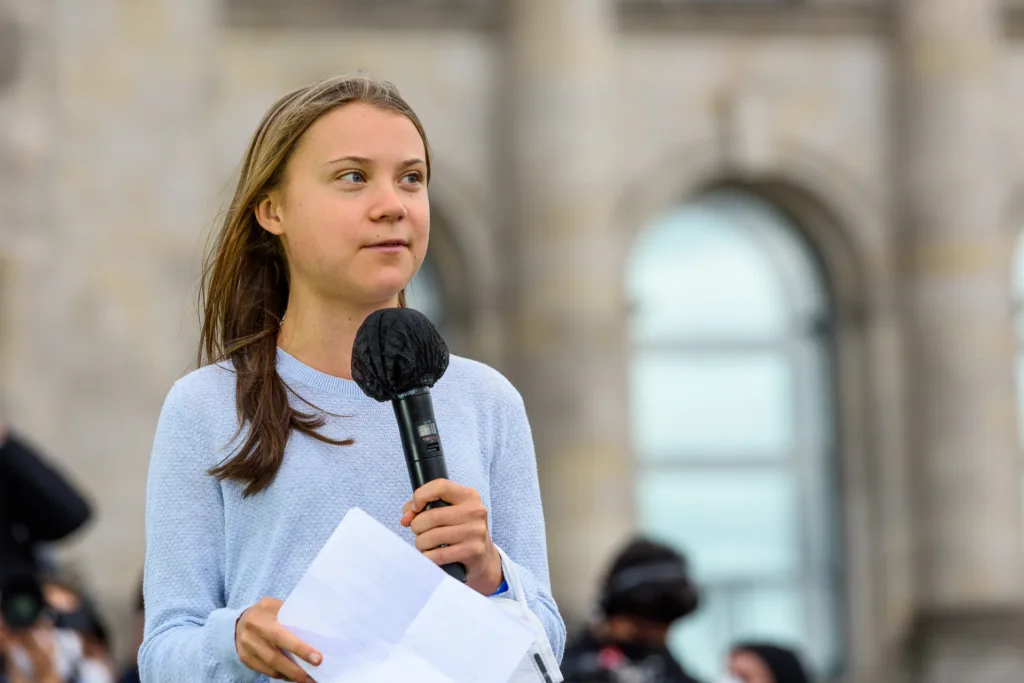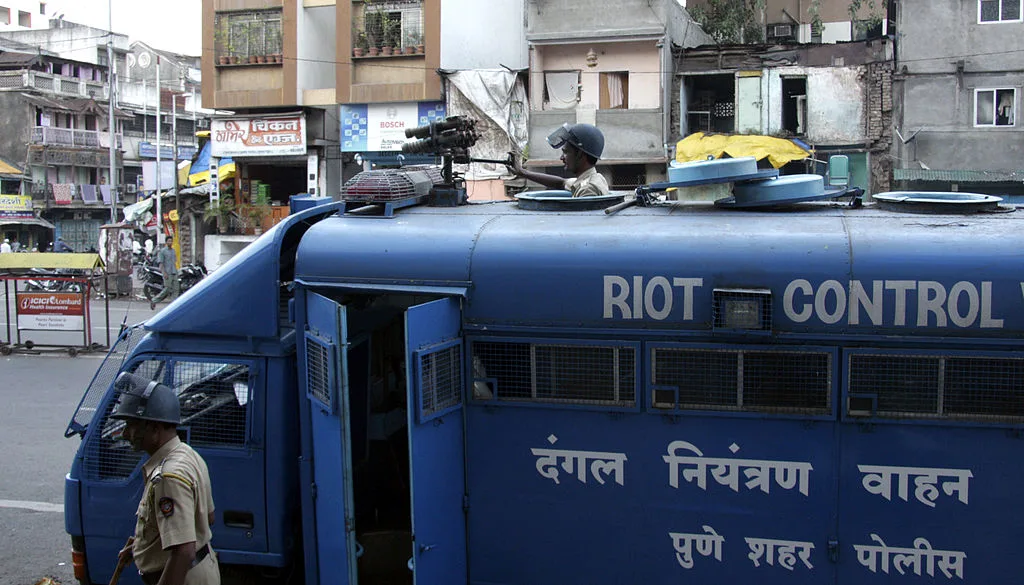Schools are supposed to prepare the next generation, but more young people feel like it's not for them. A simple question can help turn things around.
 Schools play an important part in helping young people feel seen and heard. : MChe Lee, Unsplash Unsplash licence
Schools play an important part in helping young people feel seen and heard. : MChe Lee, Unsplash Unsplash licence
Schools are supposed to prepare the next generation, but more young people feel like it’s not for them. A simple question can help turn things around.
The future weighs heavily on the minds of children and young people.
They are growing up in a world increasingly volatile, unpredictable and filled with unprecedented challenges and they’re seeing it play out every day through their news feeds.
They are bearing the burden of humanity under threat: climate change, global conflict and political extremism.
This often leaves young people in a state of crisis.
In many countries, mental health challenges are at epidemic levels, socially destructive behaviours such as bullying happens often, and there’s a high rate of disengagement at school.
Despite the new ways young people are finding their voice — such as climate protests, innovative start-ups, mobilisation on social media — the role of schooling and education remains vital to helping their well-being.
One of the key implicit purposes of schooling is ensuring future generations will comply with the structures of the world. To this end, schools frame students as ‘citizens in waiting’, who need to be prepared for a future that we assume will need similar skills and measures of success as today.
Schooling arrangements typically reproduce conventional social and economic structures, such as unequal access to career opportunities, housing and health services.
This results in a system that favours market efficiencies, distributes resources unevenly and generally doesn’t prioritise making students feel hopeful for the future.
For many young people, this goal of schooling can manifest as a conflict with what they feel should be important for their futures.
Yet their education expects them to be dedicated to building the top of a house of cards, following the rules laid down by generations before them, while they are being told that the lower foundations of the structure are crumbling.
This existential crisis is hard to comprehend for generations who have lived in relatively stable times. Yet we continue to apply the paradigms of our past to their futures.
When young people attempt to raise their voices, they are often faced with a struggle against the accepted messages of those with legitimised power.
An illustrative example of a dismissive and disempowering narrative constructed when young people try to act is that of the media coverage of student climate strikes in Australia.
In their 2021 analysis, Australian researchers Eva Mayes and Michael Everitt Hartup found media reporting around the strikes most commonly positioned students as “ignorant zealots, anxious pawns or rebellious truants”.
These narratives play out in our schools, too.
Australia has an increasing number of young people who are being disenfranchised from formal schools.
From school refusal, to homeschooling, to more truancy, to those who are at school but unable to engage, there are a significant proportion of the next generation who are not experiencing schools in the ways that adults would hope.
In talking with 15-18 year-olds who have been excluded from mainstream schooling, it was clear that a big reason they struggled to succeed in the large, busy and tightly structured organisation of a secondary school was that their voices were not heard and their needs were not met.
They had been disempowered and excluded. They could not find ways to learn, fit or feel they belonged. They felt less important than the rules in place.
They referred to teacher-student ratios, teacher workloads and timetable constraints as some of the reasons that they could not access the learning and/or social support that they needed.
They identified that teachers were busy and that their priority was meeting curriculum delivery and assessment requirements for the large numbers of students.
Students had often internalised responsibility for this.
These students felt guilty or uncomfortable if they asked for any extra time or attention from their teachers, who they knew were stressed and working hard.
They believed that it was their fault for not being able to behave or engage in the standard ways and that school was just ‘not for them’.
An important observation here is that, often, the children and young people who thrive in schools are those that are most aligned with the goals and values of the institution.
Those who are not from the dominant cultural group or who have differing needs or interests are less likely to succeed.
Although a function of schools is to develop the next generation into particular types of citizens to meet the community needs, a more innovative and transformative future will not be realised by these arrangements.
Diversifying the voices that have influence is crucial when the reproduction of the past conditions is likely to result in an untenable future.
More opportunities for transformation become possible when those who are dissatisfied can give dissenting responses and suggest alternatives. This is rarely possible in regard to the way students experience schooling.
Student voice initiatives have become popular in schools, but usually these are subject to adult discourses and regulations and are accessed by those students who already ‘fit’ — skilled at navigating the entrenched and traditional paths.
For others, such as those that I spoke with in my research, they see these opportunities for student voice as discouraging and more evidence they don’t belong.
A key responsibility that we have for our children and young people (arguably now more than ever) is that they are socially, politically and economically prepared for a precarious future — a future which is regularly portrayed to them as likely to be catastrophic.
But we dampen their agency through schooling and reduce the range of ideas, innovations and resources that they will have available to envision and manifest more positive alternative futures.
A key and simple question that should be asked of our schools is: are we doing education to our children and young people, or are we doing education with our children and young people?
‘Doing with’ scaffolds agency, supports empowerment and increases the likelihood of students feeling better prepared for their futures.
By acknowledging their concerns, respecting their differences and valuing their contributions, schools can support hope and aspiration that may combat the despondency and despair that is sadly a part of life for many.
Fiona Longmuir is a senior lecturer in educational leadership at the Faculty of Education, Monash University. Fiona’s work aims to advance just, healthy and sustainable schooling arrangements. Her research work has investigated the perceptions and experiences of students, teachers and school leaders in order to better understand relational and performative tensions that emerge in policy and practice at system and local levels.
This piece is adapted from Fiona Longmuir’s chapter ‘Potential of students’ voices to contribute to education for a future world worth living in from Living well in a world worth living in for all, Volume 2: Enacting a praxis for a just and sustainable future (edited by Reimer, K.E., Kaukko, M., Windsor, S., Kemmis, S. & Mahon, K.)
Originally published under Creative Commons by 360info™.













